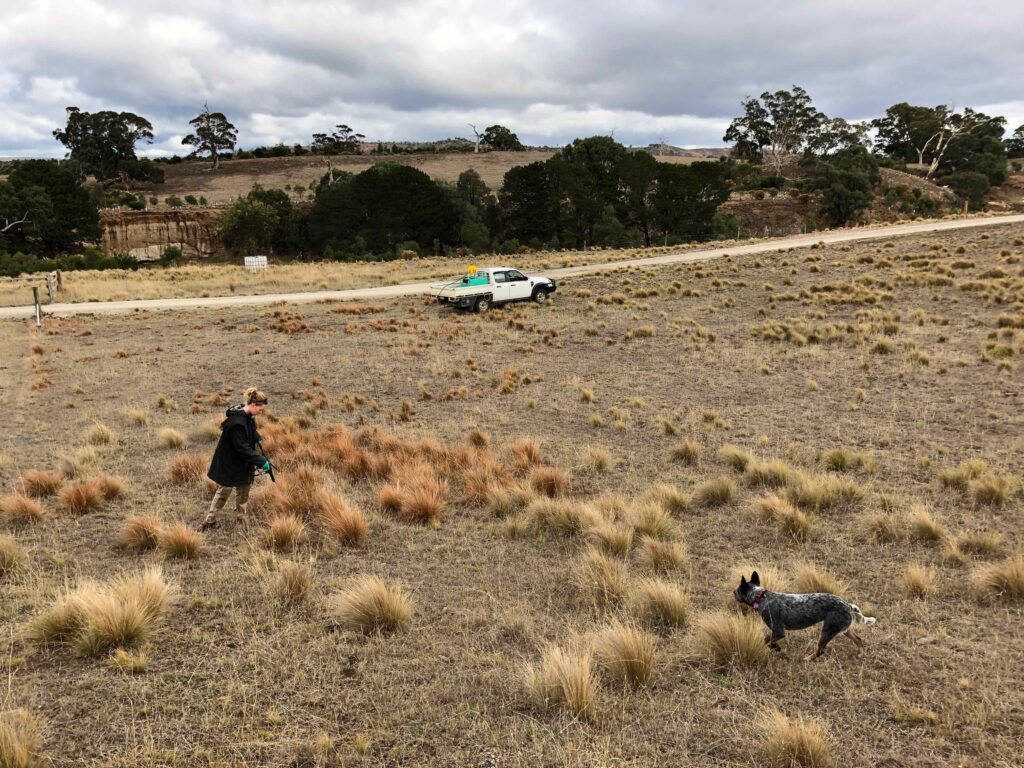
2013

2021

Serrated tussock control (2019)

Serrated tussock control (2021)

Creek planting (2014)

Creek planting (2021)
Revegetation
Over the last 10 years, we have planted more than 40,000 trees and shrubs, using tube stock sourced through landcare nurseries. Many of the seeds have been collected from the property itself – they are truly endemic to this area. To protect waterways, and all the animals that call them home, the water courses have been fenced off (sometimes on very steep terrain) and planted up intensively to control the serious erosion that affects our entire valley. Thanks to funding from our partners, we have undertaken major and ongoing weed and rabbit control. While our region faces massive challenges with serrated tussock and other invasive species, Iron Bark House shows that these invasive species can be effectively controlled, even once they have become established. This gives hope to other farmers that we can turn back the tide on some of the unwanted species that have infested the lands. It is our vision to restore the landscape to what it once was during pre-colonial times when the Wadawarrung people cared for these lands.
Management
Crucial to our farming philosophy is the recognition that we cannot continue to take from the land without giving back. Many visiting farmers remark that we could make more money by tripling our stocking rates. However, running cattle too intensively is well known to contribute to climate change through methane emissions, and to bare the soil, causing serious erosion, and removing the opportunity for carbon sequestration in the soil through deep rooted perennial plants. We are proud to run cattle at extremely low stocking rates. With careful management, the cattle become a tool in the overall regeneration of the land. This happens through daily monitoring of pasture, and targeted grazing based on species life cycle. For example, we graze paddocks intensively when certain weed species are young and green. The cattle love to eat them at this juicy phase. We move cattle on to a new paddock to allow native pasture to establish. We also allow long recovery times (6-9 months depending on the season) where the paddock is fallow, and desirable species have a good chance to put down deep root systems.

Rabbit ripping 
Waterway fencing

Extremely low stocking rates 
Healthy waterway
Animal care
Our cattle management is built on low stress. When we first started farming, we bought a few cattle dogs, thinking that they would help us round the cattle up. Little did we know that our mob would become so quiet and friendly that they actually follow us when we call! When we are walking them from one paddock to the next, we leave the dogs at home. Careful selection of a bull each year with catalogued low birth weights protects our heifers and cows from dangerous births. Because of our pasture management, they have access to top quality feed throughout the year, keeping them in healthy condition, and reducing stress during pregnancy and calving. We wean our calves late (usually at 10 months) using nose-weaning rings, which allow the calves to stay with their mothers during the process (making them look quite punky at the same time!).









